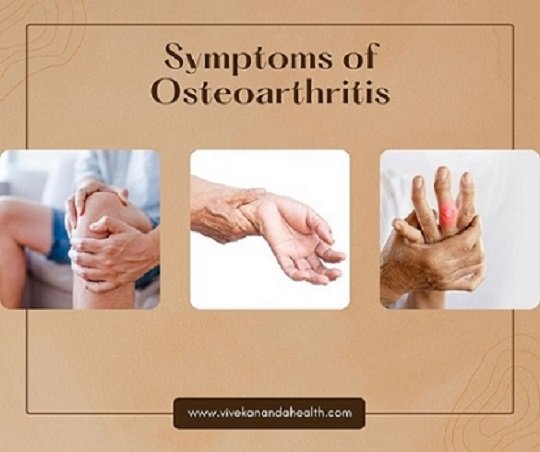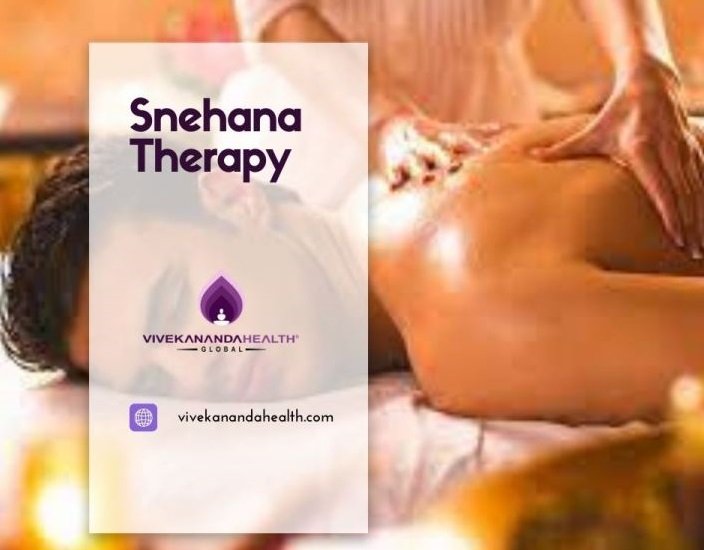Osteoarthritis
The most common type of arthritis that can affect any joint in your body.
Overview
Osteoarthritis is a prevalent degenerative joint disease that involves the progressive breakdown of joint tissues over time. It is the most common type of arthritis, with a higher incidence among the elderly population. Individuals with osteoarthritis typically experience joint pain and temporary stiffness, especially after periods of rest or inactivity.
Osteoarthritis commonly affects various joints in the body, including:
- Joints in the hands, particularly the ends of the fingers and the base and ends of the thumbs.
- Knees.
- Hips.
- Neck.
- Lower back.
These are the areas most frequently impacted by osteoarthritis, where the breakdown of cartilage and subsequent symptoms tend to occur. However,
Osteoarthritis deteriorates over time, resulting in chronic pain. The severity of joint pain and stiffness all over body can reach a point where it significantly impairs daily activities and tasks.
The persistent pain and functional limitations caused by osteoarthritis can have detrimental effects on mental health, potentially leading to feelings of depression and disruptions in sleep patterns.
Osteoarthritis causes
- Aging
- Over weight
- Joint injury or surgery
- Repetitive joint movements
- Joint abnormalities
- Family history
Symptoms of Osteoarthritis
Osteoarthritis symptoms typically progress gradually and worsen over time. Common signs and symptoms of osteoarthritis include:
Pain: Joints affected by osteoarthritis may experience pain during or after movement.
Stiffness: Joint stiffness is often more pronounced in the morning or after periods of inactivity.
Tenderness: Applying light pressure to or near the joint may cause tenderness.
Reduced flexibility: The ability to move the joint through its full range of motion may be limited.
Sensation of grating: Some individuals may feel a grating sensation when using the joint, accompanied by popping or crackling sounds.
Bone spurs: Hard lumps known as bone spurs can develop around the affected joint.
Swelling: Soft tissue inflammation around the joint can result in swelling.
Arthritis Differences- Rheumatoid Arthritis vs. Osteoarthritis
Rheumatoid arthritis (RA) and osteoarthritis (OA) are prevalent forms of arthritis, each characterized by distinct characteristics and disease processes. Although both conditions result in joint pain and damage, they are fundamentally different diseases
Rheumatoid arthritis (RA) is an autoimmune disease caused by the immune system malfunctioning and attacking the joints. In contrast, osteoarthritis (OA) is not an autoimmune disease but occurs due to the breakdown of cartilage between joints caused by wear and tear.
While RA involves the immune system perceiving the joints as targets and launching an attack, OA is primarily characterized by the degeneration of cartilage, leading to changes and discomfort in the adjacent bones.
These fundamental distinctions between RA and OA play a pivotal role in medical diagnosis and treatment planning. Nonetheless, there are various other factors that contribute to distinguishing between the two conditions and guiding appropriate management strategies.
Yoga for Osteoarthristis
If you experience stiffness and discomfort in your joints, there are yoga techniques that can help improve your mobility and comfort. It’s important to note that such symptoms may indicate osteoarthritis, a chronic and progressive condition that commonly develops with age.
The encouraging news is that regular yoga practice can enhance joint flexibility and alleviate pain associated with osteoarthritis. By incorporating yoga into your routine, you can find relief and improve your overall well-being.
How Yoga Can Help?
Yoga offers various advantages such as enhanced strength, flexibility, stress management, and improved balance. Moreover, it fosters a deeper understanding of one’s body and contributes to overall well-being.
Recent studies and personal accounts have demonstrated the positive impact of yoga on individuals with osteoarthritis. This growing body of evidence suggests that yoga can serve as a valuable adjunct to conventional arthritis treatments, a viewpoint increasingly acknowledged by medical professionals.
When To Call Your Doctor ?
Seeking medical evaluation without delay is necessary if you experience joint symptoms like those associated with osteoarthritis. Consulting your doctor helps prevent long-term joint damage and serious health complications.
Ayurvedic Treatment for Osteoarthritis
Ayurveda takes a holistic approach to addressing osteoarthritis by considering various factors such as physiological functions, metabolic processes, lifestyle choices, and dietary habits that contribute to the development and progression of the condition.
The Ayurvedic treatment for osteoarthritis focuses on not only symptom management but also preventing disease progression, minimizing disability, improving overall quality of life, and addressing the root causes that lead to the formation of osteoarthritis.
Within Ayurveda, a wide range of treatments is available for osteoarthritis, tailored to the individual’s specific severity and stage of the disease, ranging from mild to severe.
Naturopathy Treatment
Naturopathy and Yoga have emerged as highly effective methods for treating arthritis and maintaining the health of the musculoskeletal system. Naturopathic treatment for arthritis focuses on natural healing modalities, including mud therapy, acupuncture, yoga, hydrotherapy, and other approaches. These treatments have shown remarkable effectiveness in alleviating stress, enhancing overall well-being, and providing relief to individuals with arthritis.
Yoga Therapy
Yoga, in its essence, offers therapeutic benefits by combining physical exercise with meditative practices that positively impact the mind. Therapeutic yoga adopts a gentle approach, emphasizing supportive postures, breathing exercises, and guided meditation. This approach proves beneficial for individuals dealing with specific illnesses or injuries. Therapeutic yoga classes can be tailored to individual needs, delivered in small groups, and designed to enhance relaxation and facilitate healing during the sessions.
Case Study
Patient Profile: The patient, a 60-year-old male named Mr. Patel, presented with a long-standing history of osteoarthritis primarily affecting his knees. He had been experiencing persistent pain, stiffness, and reduced mobility, significantly impacting his daily activities and overall quality of life.
Treatment Approach: At our Ayurveda, Naturopathy, and Yoga center, a comprehensive treatment plan was devised for Mr. Patel, incorporating the principles and techniques of all three disciplines.
Ayurveda:
- Initial assessment: A detailed Ayurvedic examination was conducted, considering the patient’s dosha (body constitution) and identifying the root causes of his osteoarthritis.
- Herbal remedies: Tailored herbal formulations were prescribed to reduce inflammation, improve joint lubrication, and strengthen the musculoskeletal system.
- Panchakarma therapy: Mr. Patel underwent specialized detoxification procedures such as Abhyanga (therapeutic massage), Swedana (herbal steam therapy), and Janu Basti (local oil pooling therapy) to alleviate pain and restore joint function.
Naturopathy:
- Mud therapy: Localized mud packs were applied to the affected knee joints to reduce pain, inflammation, and stiffness.
- Hydrotherapy: Hydrotherapy sessions, including warm water immersion and hydro-massage, were employed to enhance blood circulation, relieve pain, and improve joint mobility.
- Acupuncture: Regular acupuncture sessions were administered to stimulate specific points, promoting pain relief and restoring energy flow in the body.
Yoga:
- Therapeutic yoga: Mr. Patel participated in personalized yoga sessions focusing on gentle and supportive postures to improve joint flexibility, strengthen surrounding muscles, and enhance overall well-being.
- Breathing exercises: Pranayama techniques were incorporated to improve lung capacity, promote relaxation, and alleviate stress associated with chronic pain.
- Meditation: Guided meditation practices were employed to calm the mind, enhance mental resilience, and foster a positive outlook towards managing his condition.
Outcome: After several weeks of consistent treatment at our center, Mr. Patel experienced significant improvements in his osteoarthritis symptoms. The pain and stiffness in his knees were noticeably reduced, allowing him to engage in daily activities with greater ease. His joint mobility improved, and he reported an enhanced overall sense of well-being and reduced stress levels.
Conclusion: This case study exemplifies the holistic approach of Ayurveda, Naturopathy, and Yoga in the management of osteoarthritis. By addressing the underlying causes, providing targeted treatments, and promoting overall wellness, our center aims to improve the quality of life for individuals like Mr. Patel, enabling them to lead healthier and more fulfilling lives despite the challenges of osteoarthritis.
Case study
Patient Profile: Ms. Chaavi, a 55-year-old female, presented with a history of osteoarthritis joint disease affecting multiple joints, including knee swelling. She had been experiencing chronic pain, joint stiffness, and reduced mobility, significantly impacting her daily activities and overall quality of life.
Treatment Approach: Acupuncture was utilized as a primary treatment modality to alleviate her osteoarthritis symptoms and provide relief.
Initial Assessment:
- Detailed consultation: A thorough discussion was conducted to understand the specific areas of pain, severity, and duration of symptoms.
- Diagnostic evaluation: Traditional Chinese Medicine (TCM) diagnostic techniques, including pulse and tongue examination, were employed to assess the underlying imbalances contributing to her condition.
Acupuncture Treatment:
- Needle placement: Fine, sterile needles were inserted into specific acupuncture points targeting the affected joints and related meridians.
- Individualized approach: The treatment plan was tailored to Ms. Chaavi,s unique symptoms, focusing on pain reduction, improving joint function, and promoting overall well-being.
- Electroacupuncture: In some sessions, low-frequency electrical stimulation was applied to enhance the therapeutic effects of acupuncture.
Follow-up and Progress: Acupuncture sessions on a weekly basis led to reduced pain levels and improved mobility for Ms. Chaavi with osteoarthritis. She experienced increased joint flexibility and enhanced overall well-being, including reduced stress and improved quality of life.
Outcome- She experienced substantial relief from osteoarthritis symptoms through acupuncture. Her pain frequency and intensity decreased, leading to improved mobility, reduced stiffness, and enhanced overall well-being.











